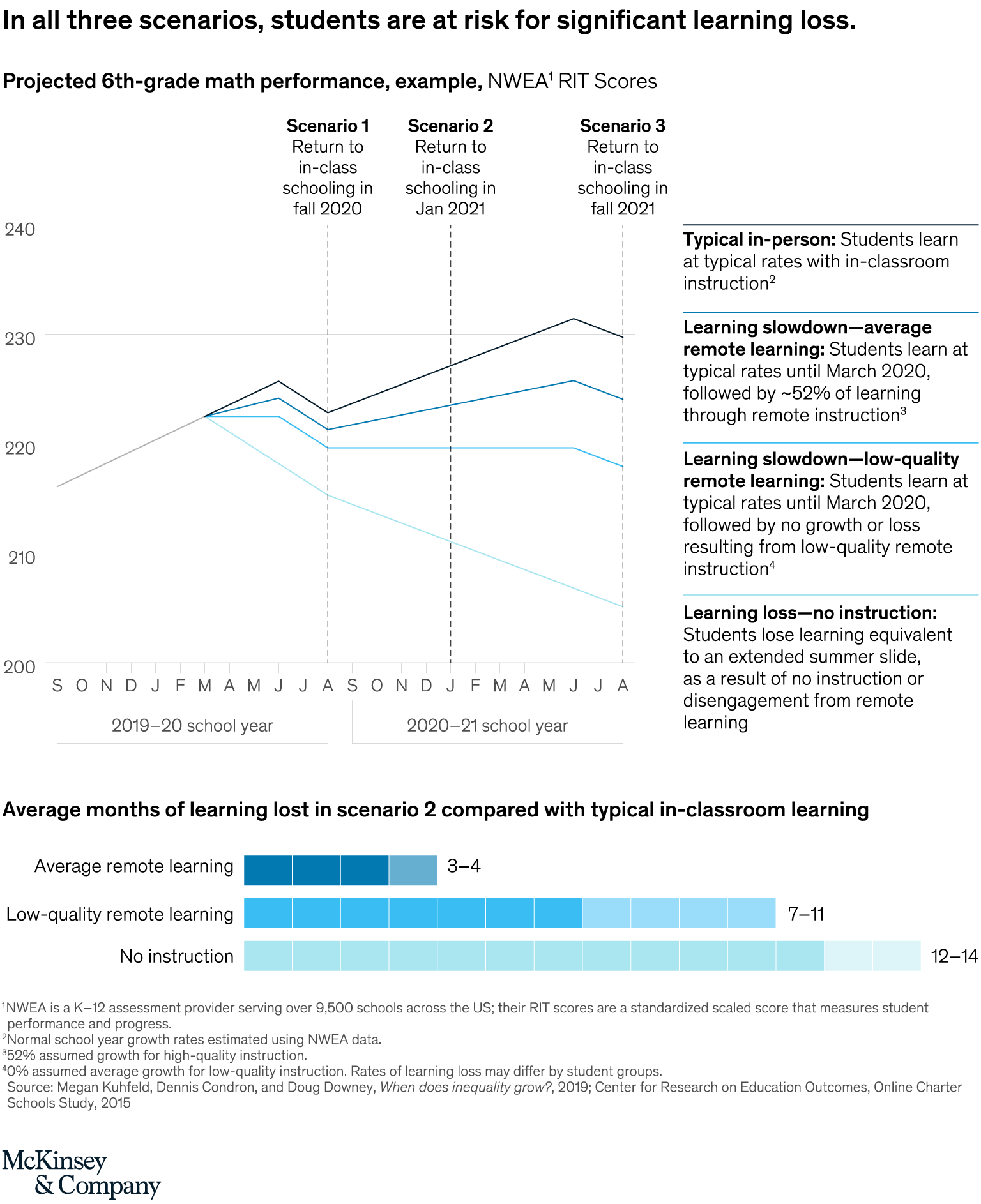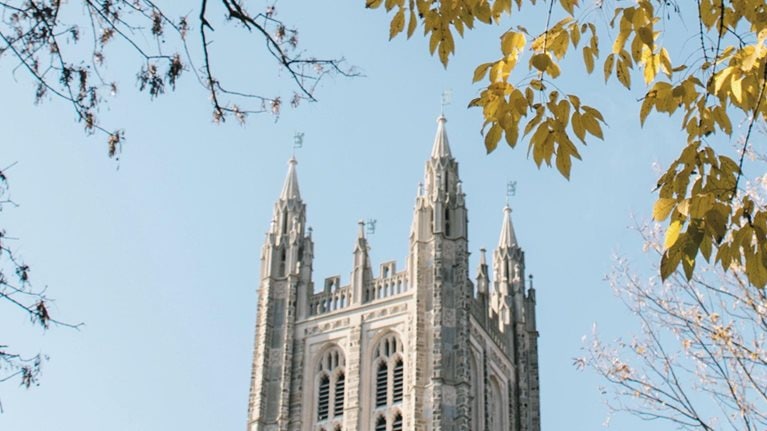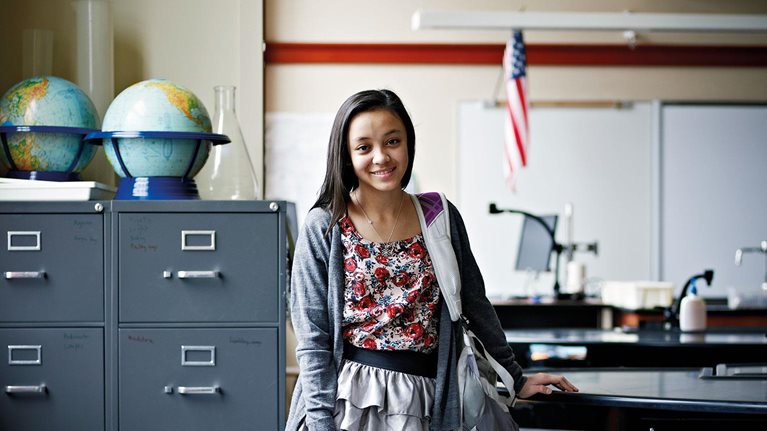The US education system was not built to deal with extended shutdowns like those imposed by the COVID-19 pandemic. Teachers, administrators, and parents have worked hard to keep learning alive; nevertheless, these efforts are not likely to provide the quality of education that’s delivered in the classroom.
Even more troubling is the context: the persistent achievement disparities across income levels and between white students and students of black and Hispanic heritage. School shutdowns could not only cause disproportionate learning losses for these students—compounding existing gaps—but also lead more of them to drop out. This could have long-term effects on these children’s long-term economic well-being and on the US economy as a whole.
Despite the enormous attention devoted to the achievement gap, it has remained a stubborn feature of the US education system. In 2009, we estimated that the gap between white students and black and Hispanic ones deprived the US economy of $310 billion to $525 billion a year in productivity, equivalent to 2 to 4 percent of GDP. The achievement gap between high- and low-income students was even larger, at $400 billion to $670 billion, 3 to 5 percent of GDP.1 Although we calculate these two gaps separately, we recognize that black and Hispanic students are also more likely to live in poverty. Yet poverty alone cannot account for the gaps in educational performance. Together, they were the equivalent of a permanent economic recession.
Unfortunately, the past decade has seen little progress in narrowing these disparities. The average black or Hispanic student remains roughly two years behind the average white one, and low-income students continue to be underrepresented among top performers.2
We estimate that if the black and Hispanic student-achievement gap had been closed in 2009, today’s US GDP would have been $426 billion to $705 billion higher.3 If the income-achievement gap had been closed, we estimate that US GDP would have been $332 billion to $550 billion higher (Exhibit 1).

These estimates were made before schools closed and the transition to remote learning began, sometimes chaotically. In this article, we explore the possible long-term damage of COVID-19–related school closures on low-income, black, and Hispanic Americans, and on the US economy.
Learning loss and school closures
To that end, we created statistical models to estimate the potential impact of school closures on learning. The models were based on academic studies of the effectiveness of remote learning relative to traditional classroom instruction for three different kinds of students. We then evaluated this information in the context of three different epidemiological scenarios.
How much learning students lose during school closures varies significantly by access to remote learning, the quality of remote instruction, home support, and the degree of engagement. For simplicity’s sake, we have grouped high-school students into three archetypes. First, there are students who experience average-quality remote learning; this group continues to progress, but at a slower pace than if they had remained in school.4 Second, some students are getting lower-quality remote learning; they are generally stagnating at their current grade levels. Then there are students who are not getting any instruction at all; they are probably losing significant ground. Finally, some students drop out of high school altogether.
We also modeled three epidemiological scenarios. In the first—“virus contained”—in-class instruction resumes in fall 2020. In the second—“virus resurgence”— school closures and part-time schedules continue intermittently through the 2020–21 school year, and in-school instruction does not fully resume before January 2021.5 In the third scenario—“pandemic escalation”—the virus is not controlled until vaccines are available, and schools operate remotely for the entire 2020–21 school year.
In our second scenario (in-class instruction does not resume until January 2021), we estimate that students who remain enrolled could lose three to four months of learning if they receive average remote instruction, seven to 11 months with lower-quality remote instruction, and 12 to 14 months if they do not receive any instruction at all (Exhibit 2).

Although students at the best full-time virtual schools can do as well as or better than those at traditional ones,6 most studies have found that full-time online learning does not deliver the academic results of in-class instruction.7 Moreover, in 28 states,8 with around 48 percent of K–12 students, distance learning has not been mandated.9 As a result, many students may not receive any instruction until schools reopen. Even in places where distance learning is compulsory, significant numbers of students appear to be unaccounted for.10 In short, the hastily assembled online education currently available is likely to be both less effective, in general, than traditional schooling and to reach fewer students as well.
Likely effects on low-income, black, and Hispanic students
Learning loss will probably be greatest among low-income, black, and Hispanic students. Lower-income students are less likely to have access to high-quality remote learning or to a conducive learning environment, such as a quiet space with minimal distractions, devices they do not need to share, high-speed internet, and parental academic supervision.11 Data from Curriculum Associates, creators of the i-Ready digital-instruction and -assessment software, suggest that only 60 percent of low-income students are regularly logging into online instruction; 90 percent of high-income students do. Engagement rates are also lagging behind in schools serving predominantly black and Hispanic students; just 60 to 70 percent are logging in regularly (Exhibit 3).12

These variations translate directly into greater learning loss.13 The average loss in our middle epidemiological scenario is seven months. But black students may fall behind by 10.3 months, Hispanic students by 9.2 months, and low-income students by more than a year. We estimate that this would exacerbate existing achievement gaps by 15 to 20 percent.
In addition to learning loss, COVID-19 closures will probably increase high-school drop-out rates (currently 6.5 percent for Hispanic, 5.5 percent for black, and 3.9 percent for white students, respectively). The virus is disrupting many of the supports that can help vulnerable kids stay in school: academic engagement and achievement, strong relationships with caring adults, and supportive home environments. In normal circumstances, students who miss more than ten days of school are 36 percent more likely to drop out.14 In the wake of school closures following natural disasters, such as Hurricane Katrina (2005) and Hurricane Maria (2017), 14 to 20 percent of students never returned to school.15 We estimate that an additional 2 to 9 percent of high-school students could drop out as a result of the coronavirus and associated school closures—232,000 ninth-to-11th graders (in the mildest scenario) to 1.1 million (in the worst one).16
In addition to the negative effects of learning loss and drop-out rates, other, harder to quantify factors could exacerbate the situation: for example, the crisis is likely to cause social and emotional disruption by increasing social isolation and creating anxiety over the possibility that parents may lose jobs and loved ones could fall ill. Milestones such as graduation ceremonies have been canceled, along with sports and other extracurricular events. These challenges can reduce academic motivation and hurt academic performance and general levels of engagement. 17
The loss of learning may also extend beyond the pandemic. Given the economic damage, state budgets are already stressed. Cuts to K–12 education are likely to hit low-income and racial- and ethnic-minority students disproportionately, and that could further widen the achievement gap.18
The economic impact of learning loss and dropping out
These effects—learning loss and higher dropout rates—are not likely to be temporary shocks easily erased in the next academic year. On the contrary, we believe that they may translate into long-term harm for individuals and society.
Using the middle (virus resurgence) epidemiological scenario, in which large-scale in-class instruction does not resume until January 2021, we estimated the economic impact of the learning disruption. (The results would, of course, be worse in the third scenario and better in the first.) All told, we estimate that the average K–12 student in the United States could lose $61,000 to $82,000 in lifetime earnings (in constant 2020 dollars), or the equivalent of a year of full-time work, solely as a result of COVID-19–related learning losses. These costs are significant—and worse for black and Hispanic Americans. While we estimate that white students would earn $1,348 a year less (a 1.6 percent reduction) over a 40-year working life, the figure is $2,186 a year (a 3.3 percent reduction) for black students and $1,809 (3.0 percent) for Hispanic ones.
This translates into an estimated impact of $110 billion annual earnings across the entire current K–12 cohort19 (Exhibit 4). Of that sum, $98.8 billion would be associated with loss of learning and the rest ($11.2 billion) with the increase in the number of high-school dropouts. This is not just an economic issue. Multiple studies have linked greater educational attainment to improved health, reduced crime and incarceration levels, and increased political participation.

The damage to individuals is consequential, but the consequences could go deeper: the United States as a whole could suffer measurable harm. With lower levels of learning and higher numbers of drop-outs, students affected by COVID-19 will probably be less skilled and therefore less productive than students from generations that did not experience a similar gap in learning.20 Furthermore, if other countries mitigate the impact of lost learning and the United States does not, this will harm US competitiveness. By 2040, most of the current K–12 cohort will be in the workforce. We estimate a GDP loss of $173 billion to $271 billion a year—a 0.8 to 1.3 percent hit (Exhibit 5). 21

A call to action
These numbers are sobering—but they are not inevitable. If the United States acts quickly and effectively, it may avoid the worst possible outcomes. But if there is a delay or a lack of commitment, COVID-19 could end up worsening existing inequities.
It is therefore urgent to intervene immediately to support vulnerable students. Many students will continue to take advantage of free learning resources, but school systems must also think creatively about how to encourage ongoing learning over the summer. Initiatives might include expanding existing summer-school programs, working with agencies that run summer camps and youth programs so that they add academics to their activities, and enlisting corporations to identify and train volunteer tutors. Tennessee, for example, is recruiting 1,000 college students to tutor kids falling behind. New York will be conducting remote summer school for 177,700 students (compared with 44,000 in 2019). Some districts are making digital summer learning available (though optional) to all students.
The necessity of continued remote learning cannot be an excuse for inaction or indifference. There are examples of high-quality online education, and reaching this level should be the general expectation. While no one knows exactly what level of in-class learning will be possible for the 2020–21 school year, many students will probably need to stay home for at least part of it. Educators need to use the summer to learn how to make instruction more effective, whatever the scenario.
Achieving this goal will make it necessary to provide teachers with resources that show them how they can make virtual engagement and instruction effective and to train them in remote-learning best practices. It will also be necessary to work with parents to help create a good learning environment at home, to call upon social and mental-health services so that students can cope with the pandemic’s stresses, and to ensure that all students have the infrastructure (such as laptops, tablets, and good broadband) needed for remote learning.
As a blend of remote and in-classroom learning becomes possible, more flexible staffing models will be required, along with a clear understanding of which activities to prioritize for in-classroom instruction, identification of the students who most need it, and the flexibility to switch between different teaching methods. And all this must be done while school systems keep the most vulnerable students top of mind. That may require investment—something that cannot be taken for granted if state and local government budgets are cut.
The US academic-achievement gap was first identified in 1966. Its persistence is troubling. The possibility that COVID-19 could make it worse deserves focused attention. The achievement gap costs the United States hundreds of billions of dollars—and also exacts a long-term cost in social cohesion. This is a moment—and a challenge—that calls for urgency and energy.


